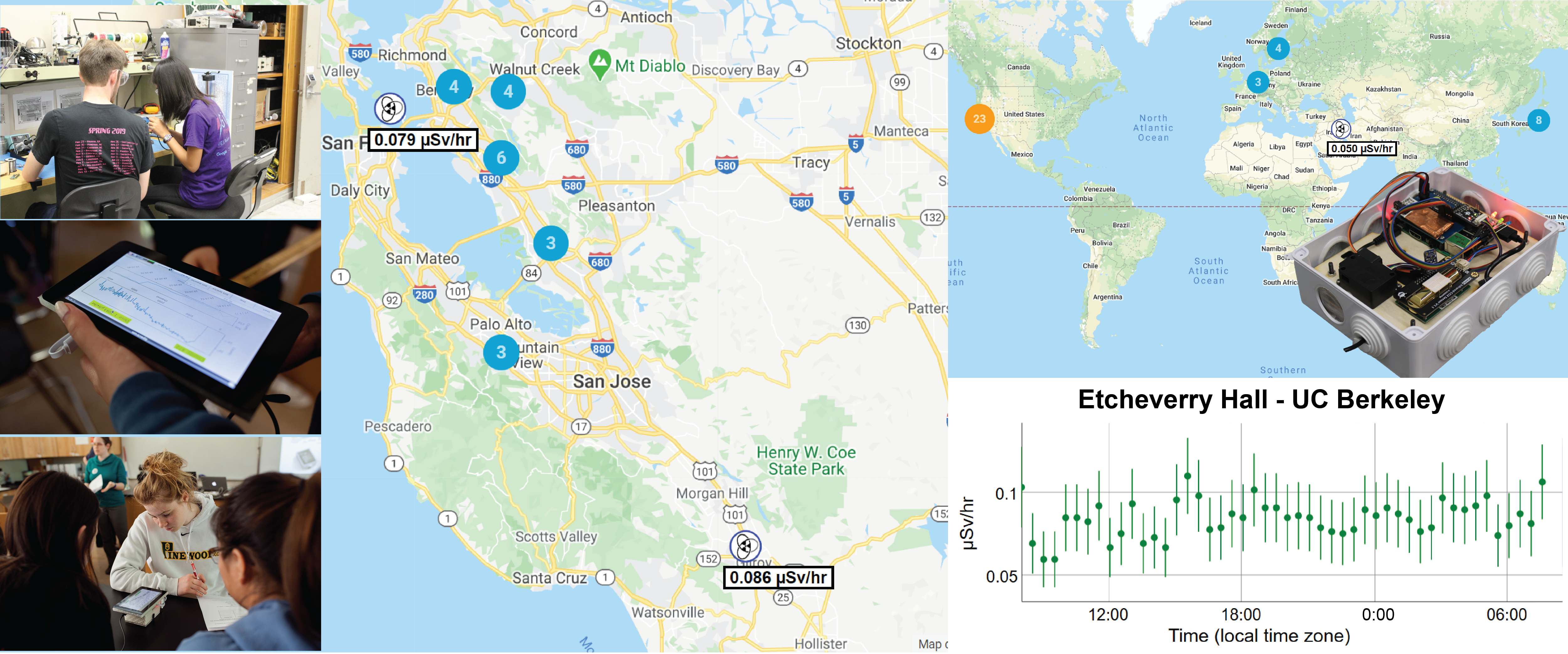
DoseNet represents a dedicated effort to encourage students to be active and engaged participants in taking on the fascinating challenges of better perceiving the world around us and understanding what “normal” really is.
Table of Contents
Building a Community
We are building an international inter-institution collaboration with the potential to develop personal links between participating schools and UC Berkeley.
Educated and science- and technology-literate citizens and decision makers provide the backbone needed for communities to thrive. Understanding fundamental science and engineering concepts is a prerequisite for processing information effectively and making sound decisions based on relevant data.
DoseNet aims to form a sensor network with schools throughout the Bay Area and beyond that will serve to establish a relationship between UC Berkeley and member high schools, with long-term goals of building students' understanding of scientific and technologic thinking while engaging and informing the community. We see interacting with young students as vital to improving community understanding of radiation and radiation risks as well as providing valuable hands-on experimentation in a relevant and cutting edge scientific endeavor. To aid in building this community, we plan to have semi-yearly workshops, bringing together students from across the network to present the results from measurements taken at their location and absorb new concepts from their scientific community.
Student Development
✓ Go beyond the syllabus!
✓ Start a club!
✓ Contribute to meaningful scientific measurements!
Developing this radiation sensor network will help to illustrate naturally occurring background radiation and associated temporal and spatial variations. Students can learn to complete research projects with the data they collect through the network and to make quantitative descriptions of their observations and the uncertainties associated with them. Through Berkeley Radwatch, the DoseNet community will provide a forum for dialogue among experts, educators, students, and ultimately the public. These sensors have the potential to give students hands-on experience with radiation detection and environmental sources while teaching them some of the basics of scientific thinking including large statistics data analysis and interpretation involving experimental uncertainties and error analysis.
|
Fig 1. Undergraduate, Jinney, building a prototype device.
|
Fig 2. Summer student, Navrit Bal, developing software for the DoseNet devices.
|
Several undergraduate students have already been directly involved in the construction and interfacing. There is the potential for interested advanced high school students to contribute to on-going development. We have had 4-6 summer volunteer interns for the last three years. Those students contributed in a variety of ways, including developing new sensor systems for in-class use, upgrades to our network to include additional capabilities, network data analysis, and more.
Going Beyond Dosimeters
This network has the potential to continue expanding across California, the US and internationally. We foresee many on-going improvements to our network, including expanding to provide kits for those interested in building their own system to bring into our network, and integrating our dosimeter and environmental sensor network with other such networks already in use around the United States.
Looking Inside the Box
|
Fig 1. Hand-held device: these have the potential for use in class demos and labs as well as field work by undergraduates and high-school interns. 7" and 2.8" screen options available.
|
Fig 2. The two major device components are a Rasberry Pi and the Radiation Watch dosimeter. Possible additions include air quality, carbon-dioxide and temperature sensors.
|
Fig 3. Network device: includes a weather-proof case with a viewing screen and custom made mounting structure, a dosimeter, environmental sensors, and a Raspberry pi.
|
These dosimeter devices are simple and cheap, containing three to four basic parts: a raspberry pi, a small dosimeter, optional additional environmental sensors, and a simple weather-proof case with a costum mounting structure designed to accommodate these parts. We also have touch-screen versions used for classroom activities and field work. The design includes the possibility to expand on these main components with additional sensors. This flexibility relies on the modularity of our python API for operating the device and the flexibility of the raspberry pi.
